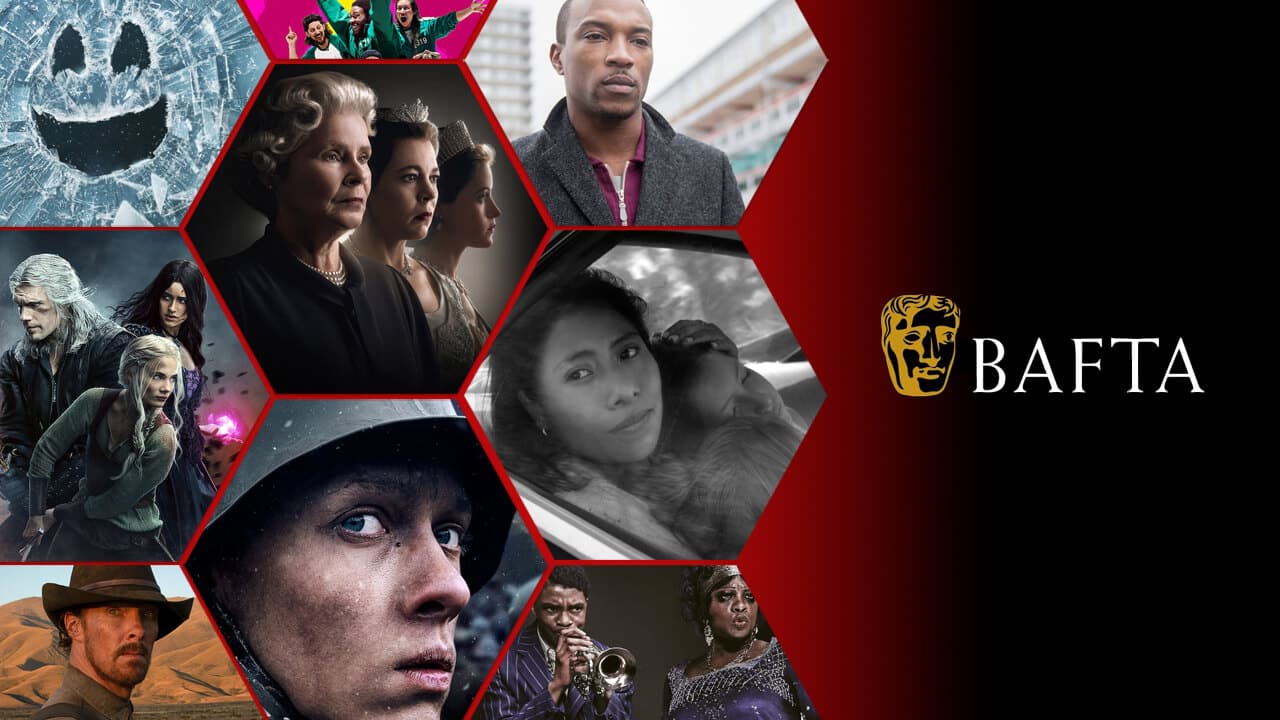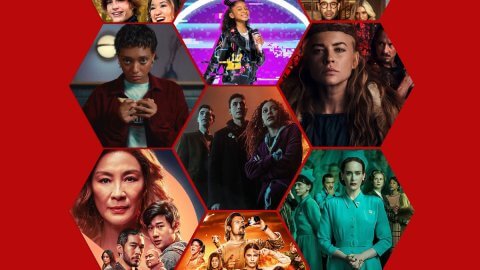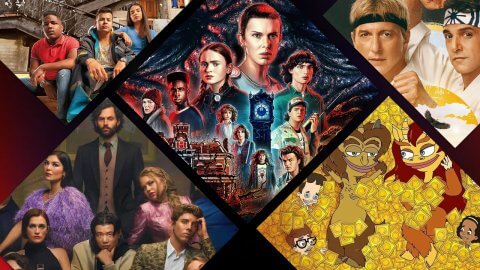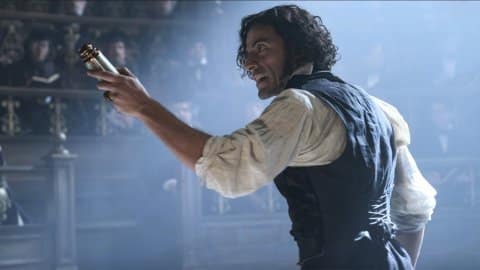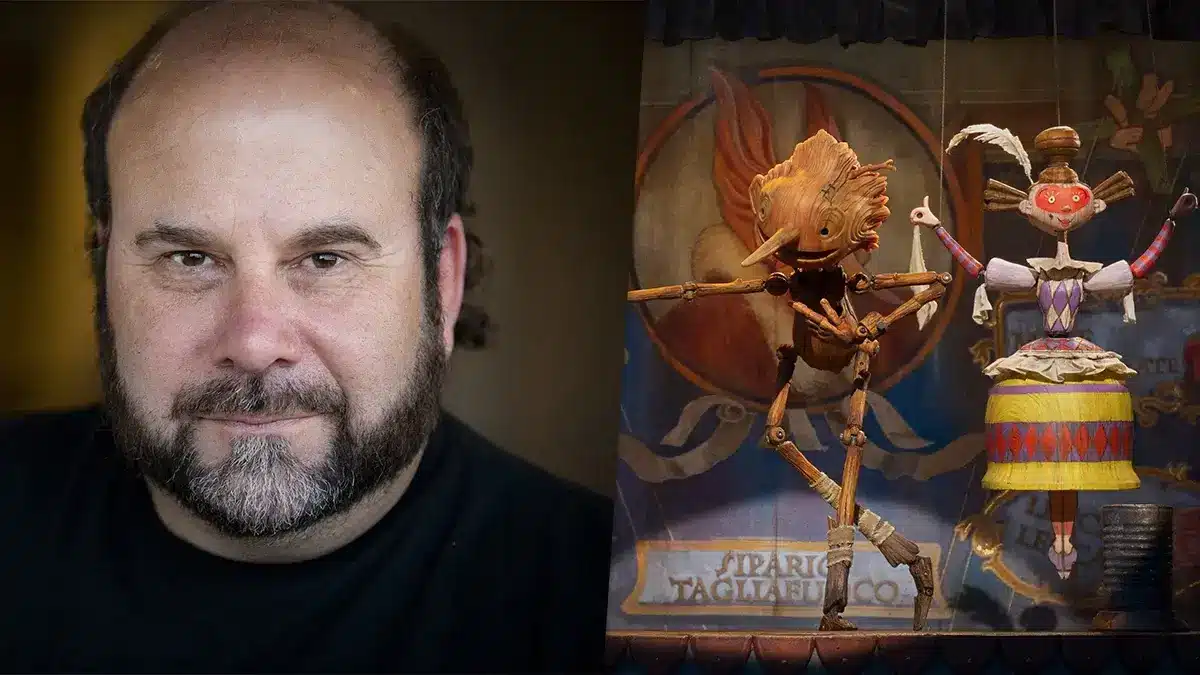
Pictures courtesy of Netflix
One of the most celebrated aspects of Guillermo del Torro’s Pinocchio garnering attention is the sound design by Scott Martin Gershin. Gershin used everything from Lincoln logs, dried celery and seashells to create the most realistic and natural sounds as possible. We talked to him more about this in the below interview.
Carlo Collodi’s Pinocchio is one of those classic tales that most households are familiar with, especially with numerous theatrical adaptations being done throughout the years, including Disney’s 2022 Tom Hanks version.
It is Guillermo Del Toro’s latest stop-motion addition that is delighting audiences and earning numerous accolades, including “Best Motion Picture- Animated” at the Golden Globe Awards last week.
WON: Alright, so first off, congratulations on making the Oscars shortlist. How excited are you about this?
Very excited. It’s always nice to be recognized by your peers. And not only that, it’s such a wonderful project. So, to be on the shortlist for a project like this, it’s very heartfelt and it’s just a wonderful experience because we have so much heart in the show and it’s with Guillermo, so I feel very fortunate that people have sought us out for being the top 10 at this time.
WON: Is this your first time making the shortlist?
Yes. I’ve worked on films that have been nominated or won Oscars as a sound designer, but this is the first time as a sound supervisor. I was nominated for a Bafta for my work on American Beauty.
WON: What about your work on Pinocchio do you think stood out so much to voters?
I think that when you approach a movie, there’s many ways to do it. This show, I believe, was about emotion, humanisms & detail. It was about sound supporting the story and the characters, evolution. Let me explain. In creating the sound for Pinocchio, what I’m doing is starting off with recordings of wood hits, metal rubber and wood creaks from the foley stage or from stuff I recorded. Once I have my sounds that I collected, I sort through the huge selection of potential sounds that I’ll start manipulating to help enhance to give Pinocchio a sonic personality. Part of the art of the design is deciding where to add sounds & where not to add sounds. It’s really like minimalistic jazz, rather than heavy metal. I’ve done big shows with Guillermo in the past like Pacific Rim, where I get to go big. There’s big music and big sounds and there’s a lot of sound audio masking going on that I need to work through. In this film, the masking is minimal so there’s nowhere to hide. In this film every sound is going to be heard, so if something doesn’t work quite right, you’ll know it. Or if it’s a sound that just sounds like a squeak or wood, it really doesn’t attach to the character himself or doesn’t enhance his personality at any given moment, then it doesn’t work. So, really going in and making sure it glues to the character and make sure that it enhances the personality. We did this not only for Pinocchio, but many of the other characters within the show.
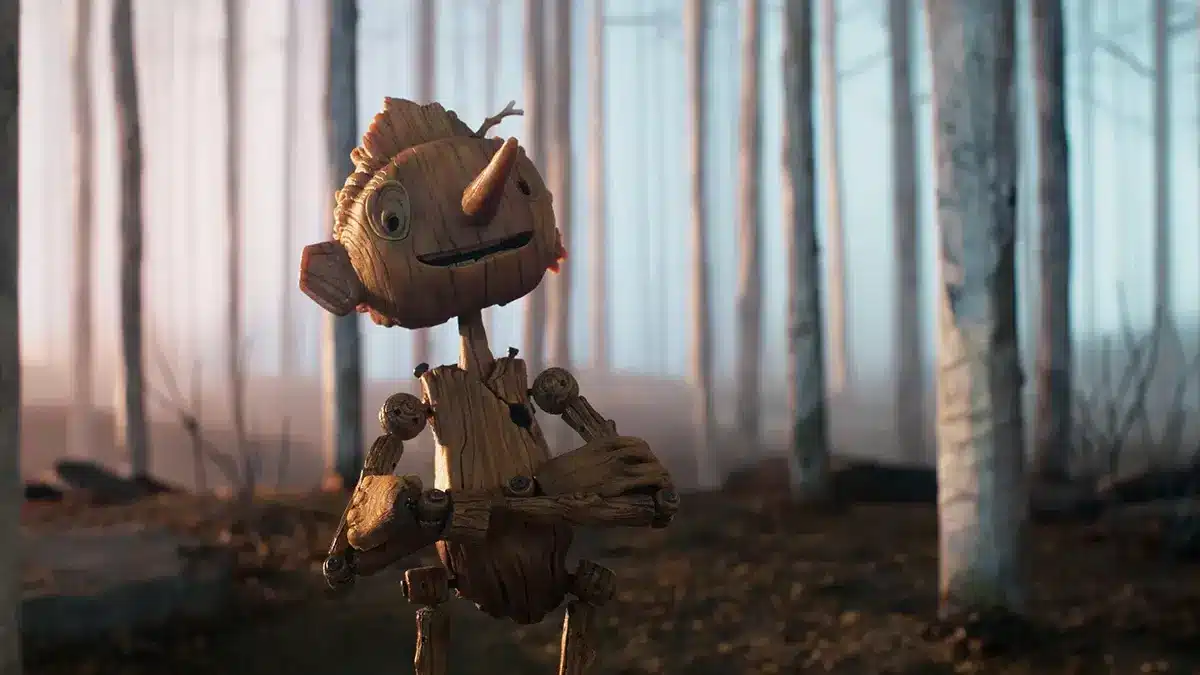
Picture: Netflix
Volpe walks around with pockets full of coins and when he gets very dramatic, we put tap shoes on him. Sometimes he has a single tap, sometimes he does double taps. Podesta needs to be very dominant in his movements, where Priest is very subdominant, especially when he’s interfacing with Podesta. So there’s all these relationships. Another is Geppetto, we used real wood clogs. As a simple example, in the early part of the show, Geppetto and Carlo in the church, they both have wood clogs, it’s so easy for them to just clack away and it can get annoying which would hurt the underlying emotion of that scene. So in the design process I had to figure out “What do we want to hear? Do we hear Geppetto or Carlo equally? Am I hearing both? What kind of perspectives do we want to add?” I added a lot of combinations of early reflections & reverbs in editorial to have the sounds placed correctly & to help place those sounds within the room or to help resonate correctly.
That basic approach had to be applied to all the characters. And once we get into the sound with Pinocchio in numerous situations & scenes, it compounds quickly. All these little details went into the creation of the movements to help support the characters. And then you start getting into more bigger sounds that are more design based.
At the beginning of the show, Guillermo wanted it to feel like you’re watching a puppet show. So we start the mix in mono and little by little we started opening up the spatial-ness of the theater. The spatial aspect of the mix reflects the emotional growth of Pinocchio from innocence & fragility to handling the complexities of his world. As the show climaxes in the third act, we are full blown spatial atmos, utilizing the ceiling, all the sides, the subs – this is especially transparent inside the Dogfish & the reeducation camp. One of the early designs I started working on was the Forest Sprite and Death. I wanted to design their voices to feel otherworldly and other-Godly. When you start hearing them, they are everywhere. Their voices subtly echo around the room. I put specific delays on specific words to accentuate words to the audience that then are placed in different parts of the room. I didn’t want to treat every word, but instead effect certain words that are strategic to the scene. I wanted to give it a feeling of grandeur & awe, other worldly.
In regards to the sounds of Pinocchio, Pinocchio is made up of approximately eight different elements, but the challenge was taking those eight different elements and massage and sculpt them to feel like it’s really one sound one sonic thought.
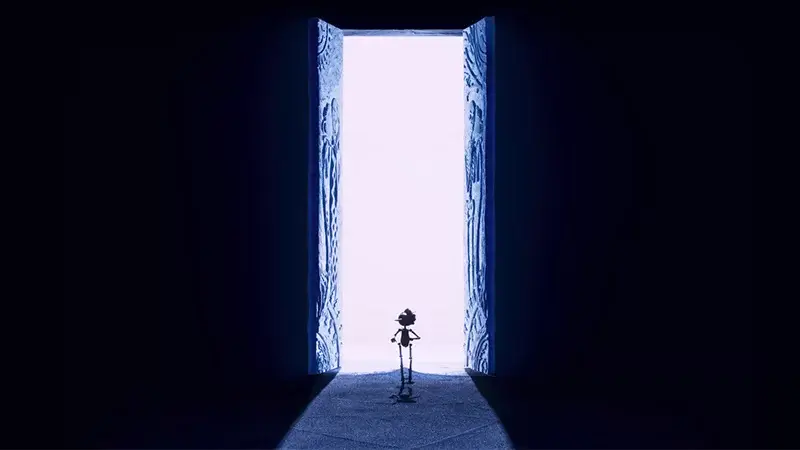
Cr: Netflix © 2022
WON: What was one of the first things that you did when you began working on Pinocchio? Where did you get your inspiration from?
When I first started working on Pinocchio, it started with concept art. I started seeing what Pinocchio was going to look like and I went, “Oh okay, this is different from what I grew up with.” I realized that this version of Pinocchio was going to have its own uniqueness and its own sonic signature. At that point I decided to not go back to other versions of Pinocchio, but to really look at this one and find out ‘what does this version of Pinocchio want to be?’ I started to see that he was made up of rough wood rather than finely carved wood, it had nails sticking out which was interesting. I started listening & recording vintage puppets As I started lightly editing in those sounds, I realized that the wood was too hard and dense and that it just didn’t fit into the fragility & complexity that Pinocchio had to have. Especially as he evolved thru out the show.
I had a wild idea to maybe use guitar wood because of its tone & musicality. I contacted a guitar company called Paul Reed Smith Guitars or PRS and told them of my idea and they sent me fifty pounds of wood scraps. The woods they use are very tonal, I had this idea that maybe I could incorporate and implement some of that tonal wood into the show.
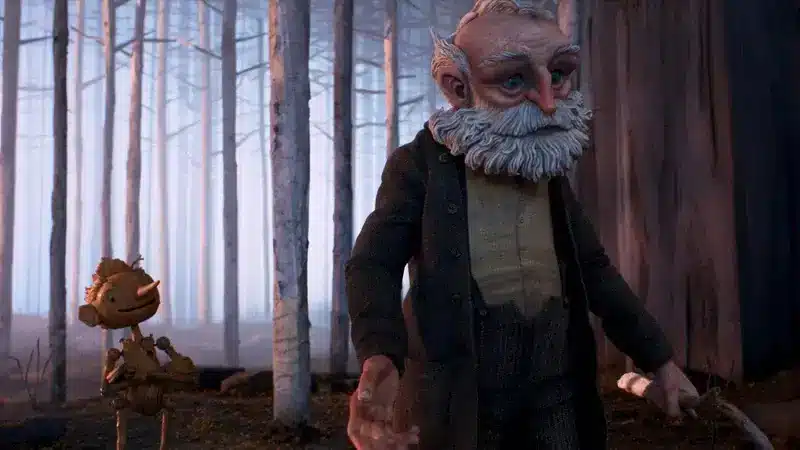
Picture: Netflix
As I was sent a number of shots of Pinocchio early on, I started realizing there had to be a certain amount of fragility to his sound. Old school puppets just didn’t have that sound, it needed to be a bit jiggly. I had to experiment with lots of different types of wood. I brought on a foley artist, Dan O’ Connell and we started throwing around ideas. We started creating a looseness where it felt like if you pushed him, knocked him, or blew really hard, he would fall over like a loose pile of play wood. His movement reminded me of when four legged animals are first born. Walking unbalanced & haphazardly … trying to find their balance. They’re always on the verge of falling over. There’s a similar inspiration there, when we first see Pinocchio stretching his limbs and just trying to walk. I wanted to capture that inspiration of being born, the fragility, the innocence, many metaphors that kind of go with what I tried to portray. At the end of the day, it’s not just about clacking sounds, it’s about using sounds to help promote, to derive an emotion. To meld sound to support what that character is experiencing & its evolutionary arc.
Before we get to know Pinocchio, I wanted him to sound more like an ‘it’ rather than ‘him’. I wanted the audience to hear Pinocchio in the same way Geppetto thought of him. As sort of a monster, a little bit reminiscent of Frankenstein.
When the audience is going to see Pinocchio for the first time, they’re going to go, “This isn’t the Pinocchio that I’m used to seeing.” We have a little bit of an advantage of creating the ‘it’ for the first time. But as the personality of Pinocchio evolves throughout the show, the fragility goes away and we start really defocusing on the sounds of his movement because at this point he has evolved beyond the point of being a thing, but now he’s his own character with his own personality. We start to introduce sounds to emphasize his stubbornness. During scenes where he is saying “I don’t want to do it”. When he snaps his body in a matter of fact way, the sounds of him moving are no longer fragile, but are more stubborn. The sounds of Pinocchio change and evolve.
The only time we go back to fragility is when Volpe is pushing him too hard to practice and we wanted the audience at that point to expose his vulnerability, a certain amount of loss of innocence. He doesn’t know any better, everything is new to him. We needed to make the sound support that evolution of the character in ways that hopefully the audience, and I will be honest, never even hears because if they “hear” our sounds then we expose us “people behind the curtain” and we’ve broken the illusion. Our goal is for the sound, the music, the sound design, the dialogue to blur away and you lose yourself into the story. Similar to when you are reading a book and you stop seeing words, but see images that the writer has created. Same with film. If we do our job correctly in my opinion then you don’t really hear anything, you are transported into the movie and into the story filled with emotions and experiences as if they were your own.
We attempted this not just with Pinocchio, but all the different characters. Something unique in this show was that not only the sounds were designed, but the spatial concept of the mix. We start the show like life, in simplicity, in mono & evolve it with the characters creating complexity & chaos going full circle like life, back to simplicity & back to mono.
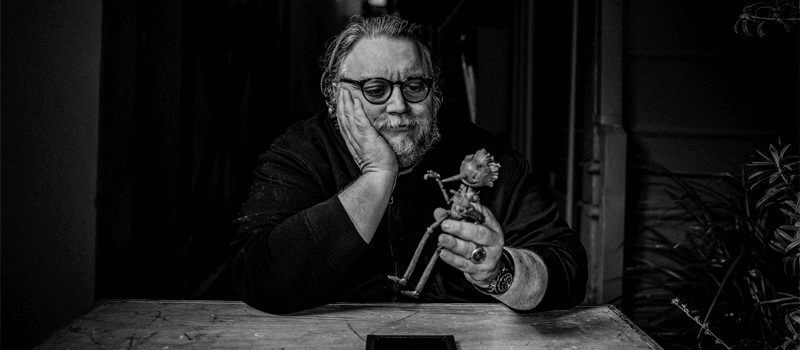
Picture: Netflix
WON: You have worked with Guillermo del Toro on Blade II, Hellboy Golden Army and Pacific Rim. How were your conversations on the approach for this film different than with your previous collaborations?
I’ve told Guillermo over the years that I want to work on some of his quieter shows, not just the big loud ones.
When I start a film, I don’t go into the project with any preconceptions of what I want to do as a sound designer, just think of me as an audio painter, I have lots of tricks and techniques and lots of tools. In the beginning, when I see a show for the first time, the show sort of talks to you. It lets you know and gives you clues as to what it wants to be- what it needs and more importantly what it doesn’t need. Really early on, after reading the script & seeing the story boards & some early scenes, it became apparent about its simplicity, not about being a wall of sound. It was about trying to make the right choices in a simplicist way, even if the solution isn’t simple. It was just trying to find the right sounds, when to play the right sounds, understanding the use of silence & simplicity as well as complexity.
The metaphors to music are very, very similar. It’s just knowing when to play the right notes and when to sit out. It’s knowing when to do something interesting, should be a melodic piece here or just a rhythmical accent. I like to design the sounds to help propel the story. As Guillermo says, “The relationship between music and effects is a bit of a tango, there’s no one person that takes it, we’re constantly weaving back and forth.”
I don’t see dialogue, music and effects as three different things- I see them all as music, as a soundtrack. Maybe it’s because of my background as a musician, I see them as one in the same. The soundtrack needs to be articulate, needs to be clear and easy to listen to. Through the colors of music & effects, we always need to understand the dialogue. That doesn’t mean minimalize the music & fx, but through great mixing allow the dialogue to easily be understood.
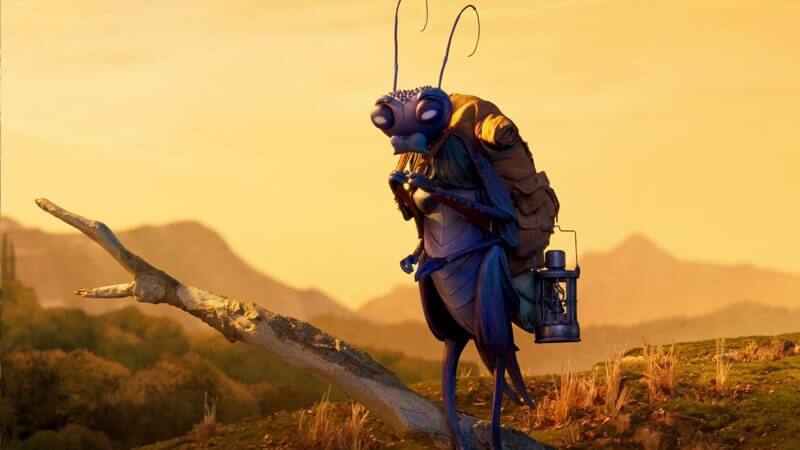
Picture: Netflix
Jon Taylor was our dialogue & music re-recording mixer. While this dialogue was recorded in recording booths that had a certain amount of sterility to them, Jon had to create and fit those characters within the space that the scene took place in. Since there is no “production” track in stop motion, all the acoustical spaces had to be manufactured and perspective of the delivery had to be created. One of the things that Guillermo really stressed was in human life. For example when somebody sits, they kind of scoot a little bit and find a comfortable position and settle in, but a lot of times animation won’t be that detailed because of wanting to be cost efficient with amount of footage created, “you don’t need it”. What Guillermo wanted to do was capture what people normally do in life. Capturing the details of a live actor’s performance and translate that into stop motion. Putting a lot of humanism into the visuals, all these little human traits, the way they move, the way they settle, all these different little details. Because of that, we have to do the same in audio, celebrate & capture imperfection. I could have triggered a lot of sounds from a sampler, but I would have lost the imperfections of a live performance.
WON: We heard that you used dried celery and seashells to create some of the sounds for Cricket. Did you use any other unique objects for the film?
In trying to understand how to make Sebastian sound like a cricket, we used a couple of elements that became his signature sounds. We used lobster and crab shells for his footsteps and dried celery for his wing flutters. We wanted it to feel different than the other characters within the show. We found a recording of one single cricket chirp, which wasn’t easy. And we used that at different times to remind the audience he is a cricket because sometimes it is easy to forget that he is. Sometimes when he jumped or made big movements you can hear a little bit of a cricket chirp. Then, it was about trying to make the size of it fit the contrast. To make Cricket feel size wise contrasting against Pinocchio and against some of the bigger characters. All of that always had to be scaled via frequency and volume.
WON: You used your voice to create some of the sounds for the Dogfish character. Can you elaborate on this?
Early on I created the big roars of the Dogfish and everybody loved it. It needed to be something big, and intimidating. It became a bit of a pacing rhythm puzzle. We established the outside, but when inside, there were a number of sub-stories, subplots happening while at the same time I needed to keep Dogfish present and alive, while not getting the way of those sub plots and dialogue.
The whole Dogfish sequence was one of the last scenes to be shot and visual effects added only weeks before the mix. I wanted to create a sound that had an element of animal to be organic, but with human traits. A certain grumpiness and of course sneezing in a human way. The best way that I figured out how to do it, which I’ve done in numerous shows, is taking my voice and manipulating it. This way while it maintains a largeness, it has some humanistic traits and personality. He needed to have a grumpiness about him and then create the buildup leading up to the sneeze. It was a bit of a puzzle to create such a long buildup. For the inner sounds of Dogfish, I had some recordings when my wife was pregnant with our son and I had used special microphones to record the inside of her body. I had those recordings and ended up using some of it for the sounds of the inside of the Dogfish, as well some other sounds like mud and water, slowed down vocals & weird tones etc, it needed to give Dogfish a personality. Establish him for the exterior, cut to the interior have a handful of seconds to establish interior vibe and then back to dialogue & work around keeping the Dogfish alive and not disappear. Right before the mix when I started getting more detailed visuals, I noticed the dual blow holes. Guillermo and I discussed adding a DogFish calling card, the design of a horn type sound when he attacked, which added a lot a cool drama and energy to the scene. It worked well with music.
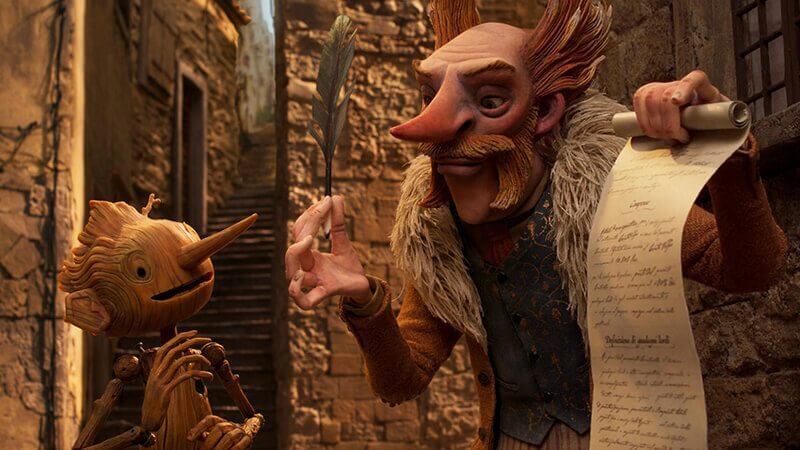
Picture: Netflix
Overall, I didn’t want the sounds to be too specific or detailed like I normally do for creatures because of the the way he was being utilized within the show. Most of Dogfish was on the inside. At the end of the day, I just thought it should be something really cool and really massive.
Having done Pacific Rim with Guillermo, we felt very comfortable about our approach in creating Dogfish.
The reeducation camp was interesting. I worked with one of my guys, Chris Richardson, and the biggest thing I wanted to make sure was that reeducation camp had a couple different parts to it. The first part is all the boys exercising and we needed everybody to have a certain amount of competitive verbiage. Now the whole show, other than the main characters, is all in Italian, so doing that during Covid was a little tricky. The way I would normally do it was just getting a bunch of people in a room or outside, which we couldn’t do. So I had 15 different kids in 15 different rooms that we recorded at once. And the trick about that is trying to get the energy of the kids, and they did a fantastic job, which is really hard to do in small isolated rooms, but we were able to put it together and give a certain amount of energy to it. So that’s the first part of reeducation camp.
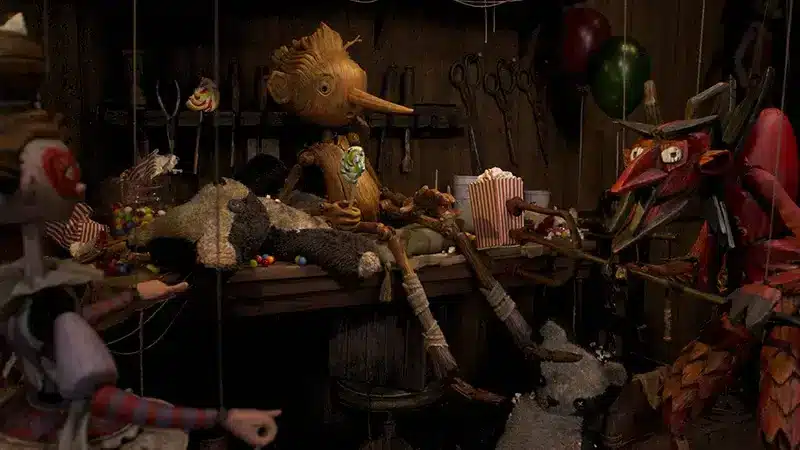
Picture: Netflix
The second part is where they do the paintball simulated fighting. I didn’t want it to sound like guns. We really needed to make sure it had a metallic-spring-popping sound where the audience knew that this was “paintball” device. While you hear all the shooting back and forth, there had to be an evolution of the boys yelling, starting with youthful, to getting tired because they’re still children and they hurt their knees and they’re getting exhausted as they’re playing paintball slash capture the flag. They had these confetti grenades that exploded mostly offstage that gives it a little tension to the scene, which while we’re not doing war, it has a little bit a precursor of things to come. This thrusts the audience into the next scene where the reeducation camp is actually getting attacked with airplanes. Explosions are happening and that’s real and how the kids react is real and all of a sudden, it’s no longer playtime, we’re now in war. I really wanted to have those contrasts from innocence to the enthusiasm of teenagers, to becoming men who will die and really having that arc sonically, so that was a challenge in its own right.
WON: You have worked in stop motion before on the film, Team America: World Police, but this was Guillermo’s first time working in the genre. Were there any specific tips you gave him?
Stop motion is a fascinating art form. It’s a hybrid of different art forms. They are using real cameras and lighting, real sets and costumes, so from that perspective it’s a live action shoot just being shot frame by frame. They filmed the show for 1,000 days with 60 different teams. I was on it for 14 months. I started with storyboards. What’s unique about stop motion per se, more than animation is the way things are shot. Different teams will grab a scene and start shooting shot by shot. In animation, a lot of times teams will animate the whole scene. Then move to the next scene. In stop motion, there are 60 different teams working on 60 different scenes at once. When I get a scene, I’ve only got four shots, let’s say for example four out of 120 shots then little by little over a year, additional shots start coming in. So none of the scenes were ever finished. You had to kind of use your imagination for how the puzzle was going to come together. And then obviously there’s a lot of work that needs to be done when a scene does get put together, then I needed to polish it, re pan it, tighten sync, and make it ready for the mix. We had shots still coming in while we were mixing. So it was that tight.
WON: You’ve recently won a Children’s and Family Emmy Award for your work on the Netflix series, Maya And The Three, can you tell us a little bit about your favorite part of working on that series?
Well, let’s do a little bit of backstory. So I was working with Guillermo on Pacific Rim and in the middle of it he handed me a ripped sheet of paper with just random numbers on it. So I looked at these numbers and I was going to ask “What is this?” And then he walks out, he’s gone. And I’m looking at these numbers, I have no clue. I’m thinking about time codes, but what does it have to do with Pacific Rim? Now it’s been two days and I was asking all my friends and the crew if they knew what these numbers could be. While the numbers were the same amount of numbers that would be in a phone number, none of them contained area codes we recognized 310, 818, 213. So I took a gamble and decided to enter it into my cell phone and dialed it up, having no clue what this is or if this is even correct.
A voice answered on the telephone so I said “Hi, I’m Scott, I got this number from Guillermo” and he goes, “Hi this is Jorge, would you love to work on a movie with me?” And that’s how I met Jorge. We did Book of Life and then we eventually did Maya and The Three. We started the show pretty much during lockdown. He told me this was a small little animated thing he was doing, would I be interested? I said of course, only to find out that it was pretty much as busy as Pacific Rim and it was 4.5 hours long. But you know, I had a chance to not only design, but also mix Maya And The Three.
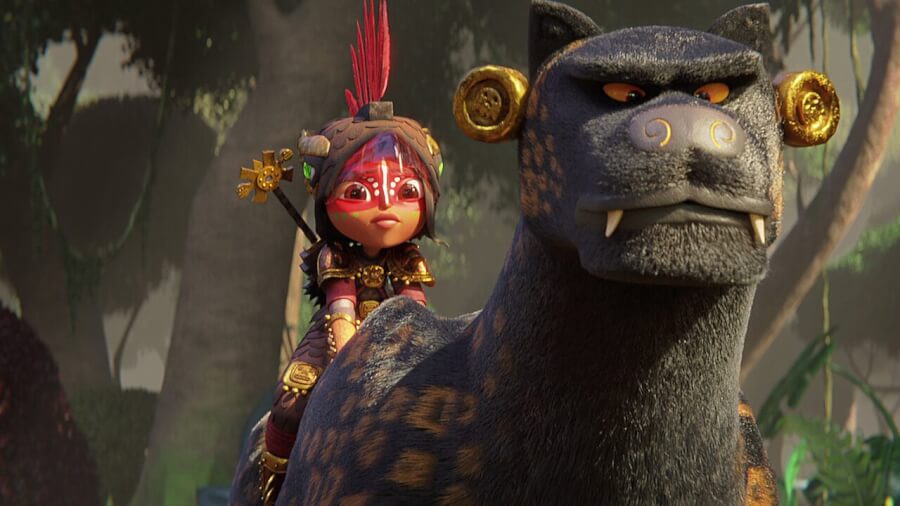
Maya and the Three – Picture: Netflix
We were all working from home while I was designing the show. I would take their tracks and would start mixing it during the editorial process. I didn’t want to approach this in a conventional way where you edit for a week or two, then mix for a number of days, then jump to the next episode. I wanted to approach this in a different way where I was designing and mixing at the same time. It allowed us a lot more time to focus on design and then at the end, spent more concentrated time focusing on final mixing.
I think the best part was just working with Jorge. There’s nine different episodes and each one has its own dynamic, there were mini movies. They all have different gods in each one and they all have different magic in each one. I’d say what both shows have in common was that the visuals were so amazing. I mean, the visuals on Pinocchio were off the charts and the stuff from Maya And The Three was equally detailed and really well done. I get very inspired by visuals, so I knew the audio needed to be as good as the visuals. But where Maya was over the top and action and magic and fantasy, it was a very different from the approach with Pinocchio. Really, both films are different from any films I’ve ever done and I liked that. It takes me out of my comfort zone and I’ve got to look at it as creating a new album and saying “Okay what does this want to be? What does it want to say?” It has to play off of Netflix TV, so that’s an interesting dynamic because I can’t rely on big theater speakers, I have to make it sound big on the TV or an iPad. So I know this was a very long winded answer, but it’s all about working with creatives, so there’s no one specific scene that I really enjoyed any more than the other.
I’ll just say that it has actually been three years going from Maya to Pinocchio and has been a sound designer’s dream. Both shows could not be any different and working with just genuinely wonderful people. Each one demands a different approach and a different style, which again, takes me out of my comfort zone to try something I’ve never done before, which is what makes my job interesting.
And with Pinocchio, I was given the time to make mistakes, to experiment and to try new ideas & approaches. I didn’t have to play it safe. And many times to do great work you need to experiment. Sometimes the thing that you think is going to work doesn’t work and it allows for experimentation and risk taking. That’s what was great about Pinocchio and just having the time and the focus to be able to just go for every little detail and make it tight. It’s always hard to describe sounds in words, but really I think the choice for Pinocchio was not only what we created, but why did we create it? When do we want to use it? Why do we want to use it? And making those pretty advanced, masterful decisions to know when not to put a sound in.

